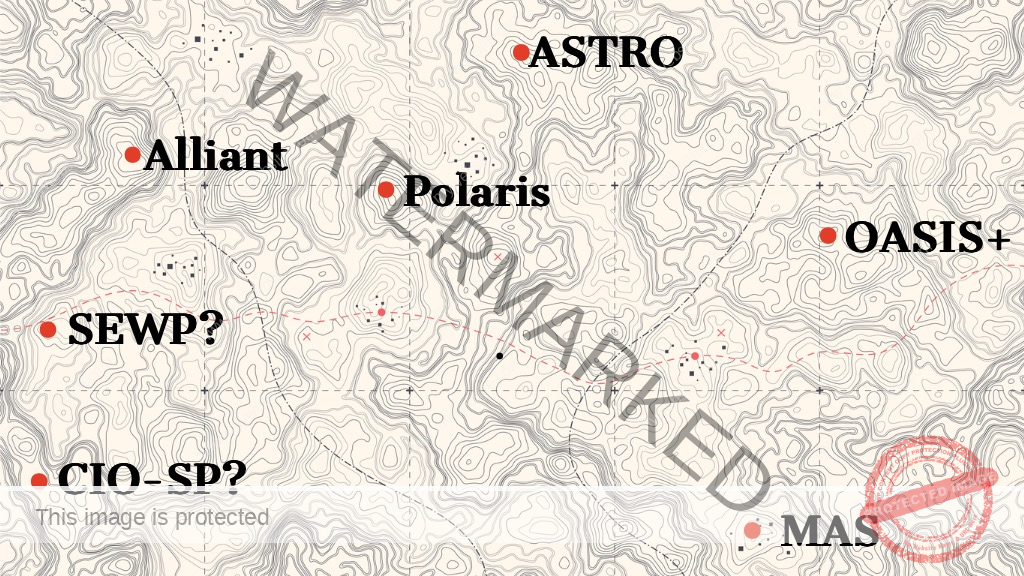The Government Just Set Up a Speedtrap
The Rise of AI-Generated Proposals
We are in the middle of a quiet revolution in government contracting. Proposals that once required a team of subject matter experts, writers, and multi-phase color reviews are now being assembled by artificial intelligence in a fraction of the time. The promise of generative AI is speed and polish—but the side effect is sameness, and often, superficiality.
Now, nearly every bidder can produce a compliant, well-worded proposal. But compliance isn’t competence, and polish doesn’t mean past performance. The government knows this.
Agency evaluators are increasingly skeptical of proposals that “read well” but don’t reflect a clear understanding of the mission, the customer, or the actual technical execution. In many cases, evaluators are reviewing volumes that contain content the bidder didn’t write, doesn’t understand, and possibly can’t deliver on.
This is where the narrative era begins to break down. The persuasive story, once a cornerstone of competitive strategy, is now being replaced by something harder, more objective, and more defensible: substantiated scoring.
That’s why we’re seeing a significant shift toward HTRO: Highest Technically Rated Offeror evaluations
HTRO: From Storytelling to Score-Proofing
HTRO changes everything. Instead of judging proposals based on persuasive narrative, the government provides a detailed self-scoring matrix tied to past performance, artifacts, and contract evidence. Offerors submit their own score, along with documents like CPARs, award letters, MSRs, LOEs, and PWS excerpts to substantiate each claim.
The government only reviews and validates the top one or two proposals with the highest score. No trade-offs. No second chances. No wordsmithing your way out.
HTRO is the government’s answer to AI-driven proposal inflation. It slows down the flood of fast, generic narratives and demands credible, verifiable performance history. Documented substantiation is no longer optional—it’s the standard. If your claimed performance doesn’t hold up under review, you’re not just marked down—you’re out.
This is the government saying: Don’t just tell us what you can do. Show us what you’ve done.
Legacy Proposal Strategies Fall Short
Most traditional BD teams aren’t ready for this. Their processes were built for narrative-heavy RFPs—where storytelling, ghosting competitors, and slick graphics could tilt the scales. But HTRO has no tolerance for unsubstantiated claims or vaguely described capabilities.
Generative AI only makes it worse: too many contractors now lean on tools that draft content they haven’t validated, opening the door to disqualification.
In HTRO, the burden of proof isn’t in the prose—it’s in the documents.
How Kinetic Get You HTRO-Ready
At Kinetic, we help clients not just compete in HTRO environments—we help them win. Here’s how:
-
Scoring Models: Our scoring models are more than static calculators—they’re dynamic decision engines. Built with flexibility at their core, our models allow clients to toggle and test different work sample combinations between themselves and their teammates with ease. As client and subcontractor data solidifies, and draft RFPs evolve into final solicitations with amendments, the model evolves with it. Flipping a switch to reflect a new teaming arrangement or swapping a work sample to boost your score is instant. This level of responsiveness makes accurate PGo and PWin assessments possible at every phase of the pursuit.
-
Competitive Gaming: Kinetic gives you a battlefield view of the competition. Leveraging deep research and competitive intelligence on incumbent performers, IDIQ holders, and potential teammates, we combine this with flexible scoring models that can simulate endless teaming and work sample configurations. The result? A dynamic, data-driven forecast of your likely standing relative to the field. Our clients don’t just see how they score—they understand what they’re up against and how to close the gap.
-
KineticC2: Our proprietary tooling revolutionizes how substantiation volumes are built. KineticC2™ reduces what used to take hours down to minutes. Whether it’s generating submission-ready technical volumes for review, incorporating late-breaking color team feedback, pivoting to a new set of work samples, changing a single acronym, or restructuring divider pages for clarity, KineticC2™ allows teams to regenerate the entire volume instantly. This repeatable, agile process ensures your volume is always current, clean, and fully aligned to every evaluation subfactor — no matter how often things change.
-
Competitor Intelligence: Our proprietary competitive intelligence delivers deep, actionable insights into every contract holder across key vehicles like OASIS+. This includes detailed profiles of each company’s capabilities, socio-economic classifications, contract footprint, and technical performance indicators. We help you identify the right teaming partners, anticipate competitor scoring potential, and build informed strategies that drive PGo and PWin. Whether you’re shaping a prime bid or supporting as a sub, this intelligence gives you the clarity to make strategic, data-backed decisions.
“HTRO has flipped the game on its head. The winners are no longer the best writers—they’re the best documenters. Kinetic helps you prove what you’ve done, predict who you’re up against, and build a strategy that actually wins.” — Chuck H, CEO, Kinetic Wins
The Future is Documented
As AI becomes the norm, the government is demanding clarity, credibility, and proof. HTRO is more than an evaluation method—it’s a market correction.
If you want to win in this new landscape, your proposal strategy must evolve. With Kinetic, you’ll do more than keep up. You’ll outscore, outmatch, and outperform.
Let’s get you ready to prove it.







